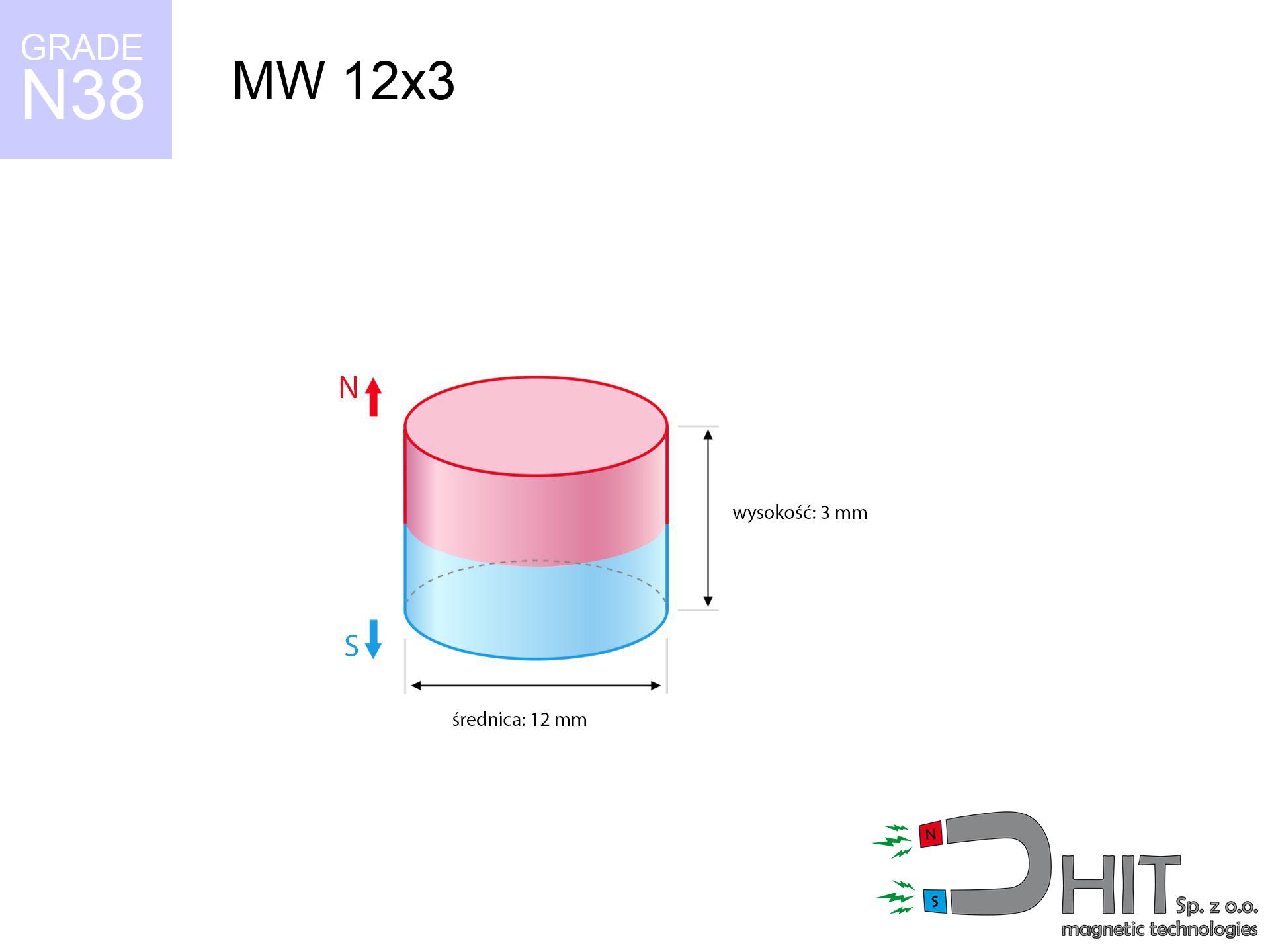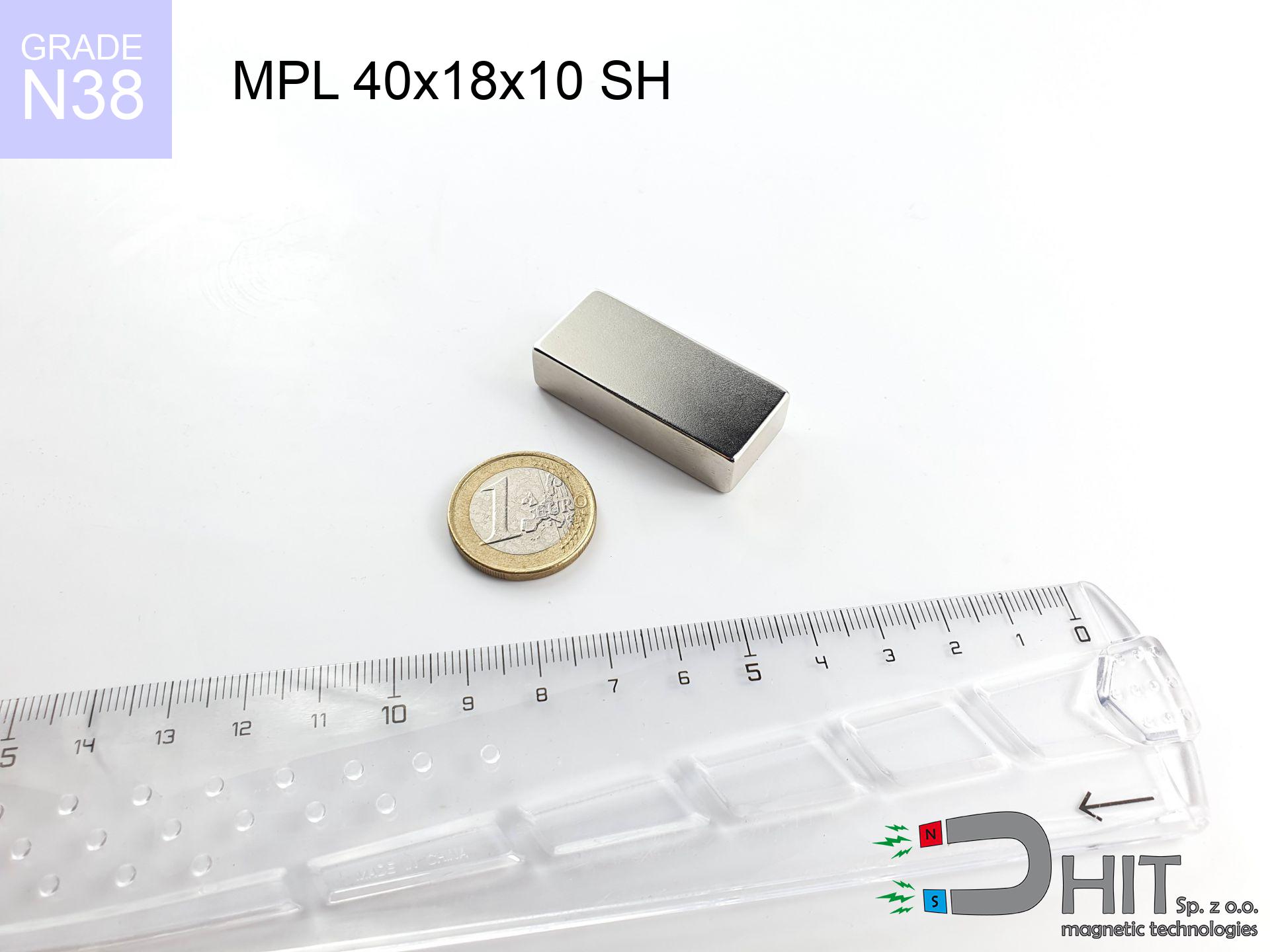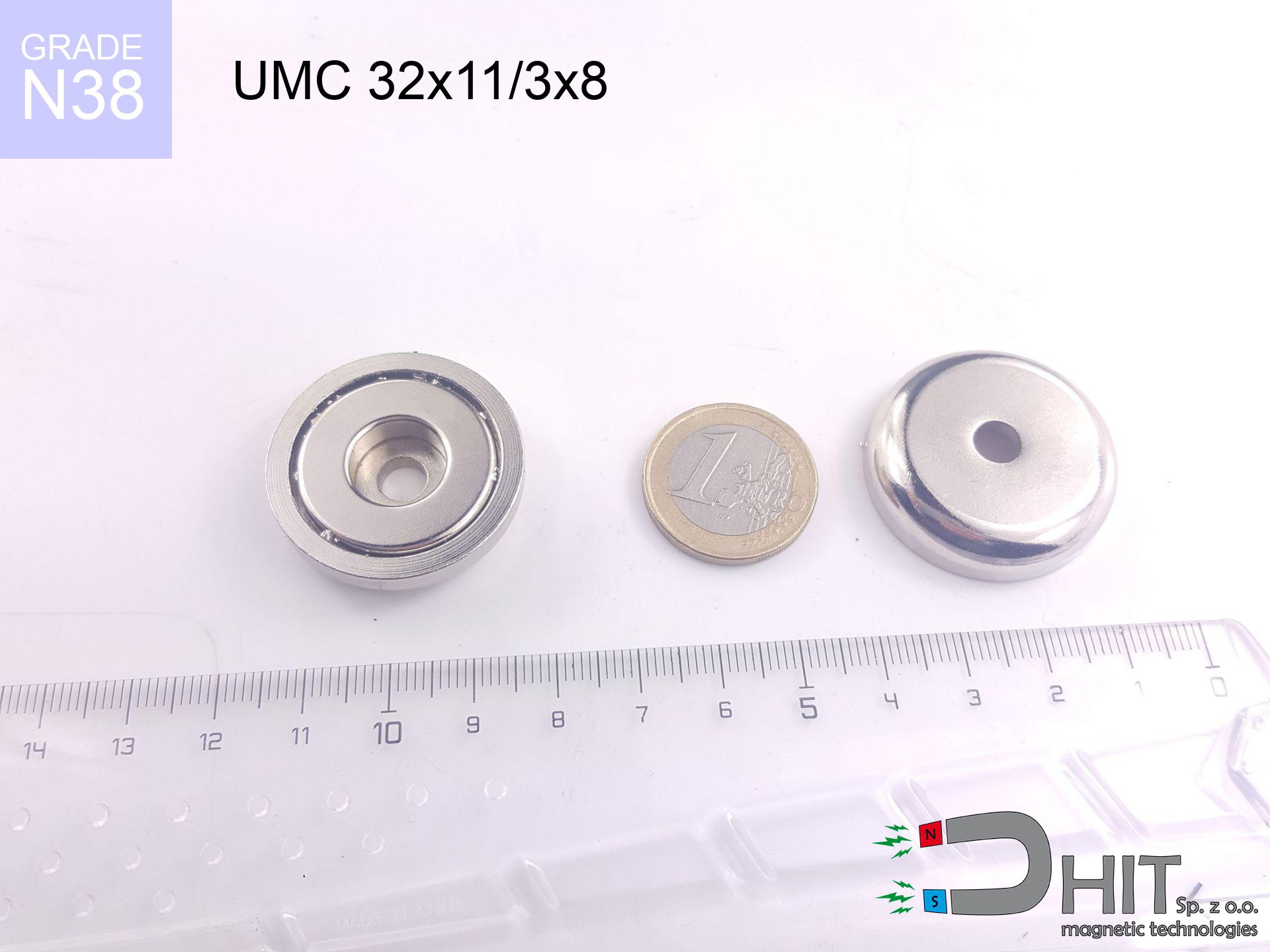MW 12x3 / N38 - cylindrical magnet
cylindrical magnet
Catalog no 010018
GTIN: 5906301810179
Diameter Ø [±0,1 mm]
12 mm
Height [±0,1 mm]
3 mm
Weight
2.54 g
Magnetization Direction
↑ axial
Load capacity
1.99 kg / 19.52 N
Magnetic Induction
277.09 mT
Coating
[NiCuNi] nickel
1.648 ZŁ with VAT / pcs + price for transport
1.340 ZŁ net + 23% VAT / pcs
0.960 ZŁ net was the lowest price in the last 30 days
bulk discounts:
Need more?Need advice?
Give us a call
+48 22 499 98 98
alternatively let us know through
contact form
through our site.
Specifications as well as appearance of a neodymium magnet can be tested on our
force calculator.
Order by 14:00 and we’ll ship today!
Magnetic properties of material N38
Physical properties of sintered neodymium magnets Nd2Fe14B at 20°C
Shopping tips
Advantages and disadvantages of rare earth magnets.
Besides their magnetic performance, neodymium magnets are valued for these benefits:
- Their strength is durable, and after around ten years it decreases only by ~1% (theoretically),
- They are extremely resistant to demagnetization induced by external field influence,
- The use of an shiny finish of noble metals (nickel, gold, silver) causes the element to have aesthetics,
- They show high magnetic induction at the operating surface, which affects their effectiveness,
- Neodymium magnets are characterized by very high magnetic induction on the magnet surface and can function (depending on the shape) even at a temperature of 230°C or more...
- In view of the ability of accurate forming and adaptation to individualized projects, neodymium magnets can be created in a broad palette of forms and dimensions, which increases their versatility,
- Key role in future technologies – they find application in data components, electric motors, medical equipment, also technologically advanced constructions.
- Relatively small size with high pulling force – neodymium magnets offer high power in compact dimensions, which enables their usage in compact constructions
Characteristics of disadvantages of neodymium magnets: application proposals
- They are fragile upon too strong impacts. To avoid cracks, it is worth protecting magnets in special housings. Such protection not only shields the magnet but also improves its resistance to damage
- NdFeB magnets lose strength when exposed to high temperatures. After reaching 80°C, many of them experience permanent drop of power (a factor is the shape and dimensions of the magnet). We offer magnets specially adapted to work at temperatures up to 230°C marked [AH], which are very resistant to heat
- Due to the susceptibility of magnets to corrosion in a humid environment, we recommend using waterproof magnets made of rubber, plastic or other material immune to moisture, in case of application outdoors
- We suggest cover - magnetic mechanism, due to difficulties in creating threads inside the magnet and complex shapes.
- Health risk to health – tiny shards of magnets pose a threat, when accidentally swallowed, which becomes key in the context of child health protection. Additionally, small components of these products are able to be problematic in diagnostics medical after entering the body.
- Due to expensive raw materials, their price is relatively high,
Detachment force of the magnet in optimal conditions – what contributes to it?
The load parameter shown refers to the limit force, recorded under laboratory conditions, specifically:
- on a base made of mild steel, perfectly concentrating the magnetic field
- with a cross-section no less than 10 mm
- with a plane free of scratches
- under conditions of gap-free contact (metal-to-metal)
- for force applied at a right angle (in the magnet axis)
- at room temperature
Practical aspects of lifting capacity – factors
Please note that the application force will differ influenced by the following factors, in order of importance:
- Distance – existence of foreign body (paint, tape, air) interrupts the magnetic circuit, which reduces capacity rapidly (even by 50% at 0.5 mm).
- Force direction – catalog parameter refers to detachment vertically. When attempting to slide, the magnet holds much less (often approx. 20-30% of maximum force).
- Steel thickness – insufficiently thick plate causes magnetic saturation, causing part of the power to be escaped to the other side.
- Material type – the best choice is pure iron steel. Stainless steels may have worse magnetic properties.
- Plate texture – ground elements guarantee perfect abutment, which improves force. Uneven metal reduce efficiency.
- Temperature influence – hot environment weakens magnetic field. Too high temperature can permanently demagnetize the magnet.
* Holding force was measured on a smooth steel plate of 20 mm thickness, when a perpendicular force was applied, in contrast under parallel forces the holding force is lower. Moreover, even a minimal clearance {between} the magnet’s surface and the plate lowers the lifting capacity.
Safety rules for work with NdFeB magnets
Safe operation
Exercise caution. Rare earth magnets act from a long distance and snap with massive power, often quicker than you can move away.
Safe distance
Avoid bringing magnets close to a wallet, laptop, or screen. The magnetism can destroy these devices and wipe information from cards.
No play value
Strictly keep magnets out of reach of children. Risk of swallowing is high, and the effects of magnets connecting inside the body are very dangerous.
Do not overheat magnets
Avoid heat. Neodymium magnets are susceptible to heat. If you require operation above 80°C, look for HT versions (H, SH, UH).
Medical interference
Warning for patients: Powerful magnets disrupt electronics. Keep minimum 30 cm distance or ask another person to work with the magnets.
Allergy Warning
Medical facts indicate that nickel (standard magnet coating) is a common allergen. For allergy sufferers, prevent touching magnets with bare hands and opt for coated magnets.
GPS and phone interference
Be aware: neodymium magnets produce a field that confuses precision electronics. Keep a safe distance from your phone, tablet, and navigation systems.
Crushing risk
Large magnets can smash fingers instantly. Never put your hand between two attracting surfaces.
Dust is flammable
Fire warning: Neodymium dust is highly flammable. Do not process magnets without safety gear as this risks ignition.
Magnet fragility
Watch out for shards. Magnets can explode upon uncontrolled impact, ejecting shards into the air. Wear goggles.
Caution!
Want to know more? Read our article: Are neodymium magnets dangerous?






![SM 19x225 [2xM6] / N50 - magnetic separator SM 19x225 [2xM6] / N50 - magnetic separator](https://cdn3.dhit.pl/graphics/products/sm-19x225-2xm6-jis.jpg)


